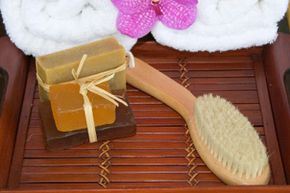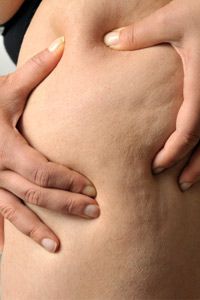Isn't it interesting that dimples on the cheeks on your face are cute, but dimples on those other cheeks are a cause for concern? We all would like to have smooth skin, but some people have to deal with a condition that most would find embarrassing: cellulite.
Cellulite describes the uneven appearance of the skin on the thighs and buttocks. Some refer to it as dimpled skin while others go so far as to compare it to the surface of an orange peel. It affects more women than men. While cellulite is related to fat, a woman doesn't have to be overweight to have cellulite.
Advertisement
Many people have sought for a way to reduce or cure cellulite with little success. There are treatments on the market ranging from expensive laser and liposuction procedures to various creams designed to melt away the fat. But the truth of the matter is that no method is foolproof -- most only reduce the appearance of cellulite. And the effects usually last for a few hours or days at most.
One proposed treatment for cellulite is to use a dry body brush. The idea is to scrub the thighs and buttocks vigorously with the brush to promote nutrients and remove toxins from the skin. Even if the treatment could achieve that goal, the underlying problem is that cellulite is not caused by a buildup of toxins. It's also not the product of a lack of nutrients.
What dry brushing may do is promote the tissue to swell, which could hide the uneven dimpling effect of cellulite. While the underlying cause of cellulite remains unaffected, the temporary swelling may help the brusher achieve the appearance of smooth skin -- at least for a short time, anyway.
Let's take a look at what causes cellulite and discover why the toxin explanation is misleading.
Advertisement



